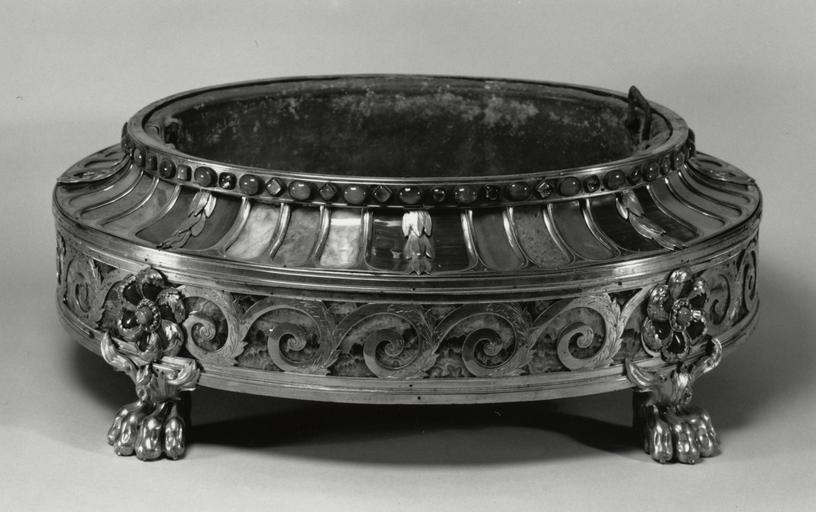MAKE A MEME
View Large Image

| View Original: | Johann_Christian_Neuber_-_Stand_or_socle_for_a_figural_group_-_Walters_541909.jpg (1799x1129) | |||
| Download: | Original | Medium | Small | Thumb |
| Courtesy of: | commons.wikimedia.org | More Like This | ||
| Keywords: Johann Christian Neuber - Stand or socle for a figural group - Walters 541909.jpg The tradition of mounting specimen stones can be traced to 16th-century Florentine pietra dura work In the late 1700s techniques for slicing and polishing stones were perfected allowing lapidaries most notably the Dresden goldsmith Johann Christian Neuber 1736-1808 to produce masterpieces in which concentric radiating patterns of specimen hardstones were set in lids of snuffboxes and circular tabletops In this work the skeleton of the container is in gilded bronze with Roman motifs including scroll patterns paterae saucer-shaped appliqués and paw feet The body is lined with sheets of pink amethyst with traces of fluorite and the rim is decorated with alternating carnelians and foil-backed amethysts Set in the frame are sheets of dark brown agate light brown spotted petrified wood tan agate pink agate and white marble The paterae have centers of banded agate and borders of jasper late Other date century 18 gilded bronze amethyst agate jasper petrified wood carnelians marble cm 16 5 48 9 41 accession number 54 1909 34494 Frédéric Auguste III 1750-1827 Elector of Saxony date and mode of acquisition unknown Nicolai Wasilijewitsch Repnin 1732-1801 1779 by gift with thanks for his role in the negotiation of the Peace Treaty of Teschen Alexandre Polovtsoff Aleksandr Aleksandrovich Polovtsov Paris date and mode of acquisition unknown Henry Walters city Baltimore Walters Art Museum Henry Walters Acquired by Henry Walters 1929 The Fabergé Menagerie The Walters Art Museum Baltimore; Columbus Museum of Art Columbus; Portland Art Museum Portland 2003-2004 place of origin Dresden Germany Walters Art Museum license Bronze objects Animal feet in art Johann Christian Neuber Collections of the Walters Art Museum Nicholas Repnin | ||||